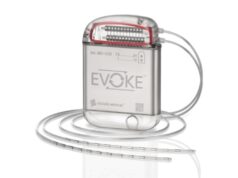
A spinal cord stimulation (SCS) training curriculum has been developed by a multidisciplinary taskforce of the North American Neuromodulation Society’s (NANS) education committee. It aims to standardise educational requirements across multiple training paths to SCS service, and defines Accreditation Council for Graduate Medical Education (ACGME) milestones for basic and advanced learners, as well as practitioners, meaning it can be adopted by programmes, hospitals, or other entities. An article detailing the development of the curriculum, written by Alaa Abd-Elsayed, University of Wisconsin School of Medicine and Public Health (Madison, USA), and colleagues throughout the USA, has been published in Neuromodulation.
According to the authors, SCS is the most widely used neuromodulation therapy, which is offered to tens of thousands of patients every year in the USA alone. Despite the first use in humans in 1967, no specifically defined SCS training or expertise standards are available nor have been developed. The urgent need for such a curriculum, Abd-Elsayed et al acknowledge, is further underscored by the large number of SCS implantations performed.
Moreover, they write that many different medical specialities participate in aspects of neuromodulation trials: patient selection, implantation, and follow-up. This means that SCS knowledge and training may “differ widely among specialties”. Importantly, the NANS committee also highlight the link between patient outcomes and physician expertise, referring specifically to the physician’s choice of patient selection, surgical technique, and follow-up care.
Given the fast-evolving data and expansion in indications, techniques, and hardware, the authors write, “This increased complexity and utilisation of the technology mandates proper training of physicians in their application.”
The taskforce, represented by multiple specialties, established the educational curriculum for SCS over periodic conferences. After being peer-reviewed at two different levels; the educational committee of NANS and the society’s board members, the curriculum was approved in August of 2019.
“The curriculum was divided under the rubrics of patient care and procedural skills, systems-based practice, medical knowledge, interpersonal skills and communication, practice-based learning, and professionalism,” the authors note. They add that it acknowledges the differences in residency versus fellowship programmes for these specialties, and where along the training continuum the individual would be exposed to SCS therapies.
“Ultimately, the goal is to establish the necessary competence to offer to take part in the implementation of neuromodulation therapies regardless of one’s individual specialty,” Abd-Elsayed and colleagues surmise. They maintain that there was an “unmet need” to establish a continuum of education and goals, as well as the ability to track completion through formal assessments. Finally, they note that the curriculum denotes a standard by which “an accepted competency could be met”, and provides guidance towards eventual accreditations and certifications.










